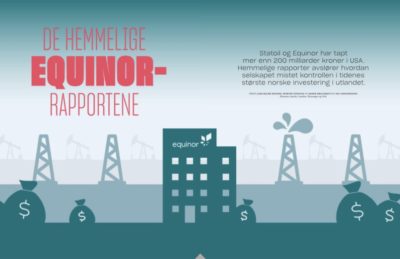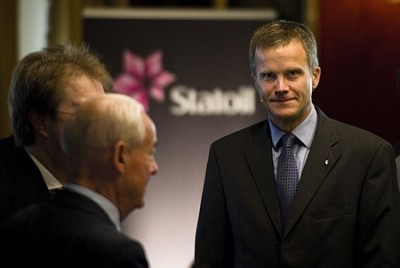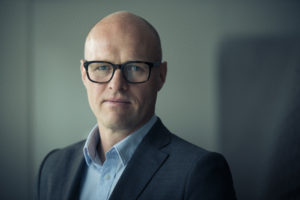It’s being called Norway’s “largest industrial scandal ever:” a documented combination of big spending, management chaos, executive greed and a lack of internal control at state oil company Equinor’s operations in the US. It all contributed to huge and “embarrassing” losses previously unknown to Norwegian state officials or oil analysts, revealed just as Equinor and other oil companies are seeking tax relief after oil prices collapsed.

Newspaper Dagens Næringsliv (DN) has detailed wild times at the Norwegian oil company’s offices in Houston and Austin, Texas after oil prices soared roughly a decade ago. They continued even after internal accountants and auditors started sending out alarms in 2014, when oil prices fell.
In a 16-page report in Saturday’s edition of DN, its team of journalists detailed how executives at the company, then known as Statoil, did not conduct themselves with the same prudence and restraint expected of a state-controlled company at home. The resulting losses, revealed through internal reports by Statoil/Equinor auditors that were obtained by DN, amounted to more than USD 20 billion on Statoil’s investments in the US over the past 20 years.
Equinor spokesman Bård Glad Pedersen later seemed to downplay the losses, telling newspaper Klassekampen that they’ve now been published in the company’s annual report, and he linked them mostly to the fall in oil prices in 2014. He admitted that Statoil’s Houston-based operation in the US “spent money that shouldn’t have been spent” and that costs were too high, “but others in the industry also had costs that were too high.”
DN, meanwhile, documented how even middle-managers at Statoil were paid exhorbitant salaries by Norwegian standards, top executives drove Jaguars and Maseratis, and they all had a penchant for hosting big company-paid parties often. They spent heavily on marketing and promotion of Statoil’s name in Houston, sponsored local athletics and even bid up the price of a turkey being auctioned at the Houston Livestock Show & Rodeo (which Statoil was also sponsoring) to a stunning USD 115,000, albeit for charity. Statoil was viewed as a small company in America with a lofty image of itself, one internal auditor told DN, and that reportedly got it into trouble.
‘The Norwegian invasion’
One local newspaper in Houston referred in 2013 to Statoil’s high level of activity as “the Norwegian invasion,” especially after Statoil had hired so many people that the company needed bigger offices in the US’ oil capital. DN cited a report in the Houston Business Journal about how Statoil entered into one of the biggest long-term leasing deals in the city that year, committing to pay USD 400.8 million for space in a new 23-story high-rise where it’s still located.
Of the roughly NOK 250 billion invested in its US operations over the past 20 years, more than NOK 200 billion has now been logged as tax write-offs, according to Statoil/Equinor’s own internal auditors. Most of the losses are tied to Statoil’s investments in shale oil and gas, land-based projects that were unfamiliar to the Norwegian company that has specialized in offshore oil and gas since oil was first discovered in the North Sea in 1969. Company officials now admit that they “underestimated” how complicated it could be to invest in land-based oil and gas projects.

DN reported how Statoil also lost control over companies it had acquired to break into the shale oil and gas business in the US. That led to auditors eventually uncovering unknown bank accounts, around USD 1.5 million credit card debt unaccounted for, and both over- and under-payment of bills. Statoil became known as a “pushover” in the US that would give in to pressure during negotiations and pay itself out of problems. It also attracted lots of lawsuits from holders of oil wells for which Statoil gained responsibility, but either failed to pay or claim payments from well partners.
Robert Gronwaldt, a 37-year veteran of the oil industry who started working as an internal auditor at Statoil in 2012, told DN he’d never seen anything like what he found at Statoil. Gronwaldt, who left the company in 2017, had initially been reluctant to meet with DN and share what he knew. When a confidentiality agreement expired, however, he decided it was “important that the truth come out.” At a meeting with DN reporters in Houston in February, he told his story, as have several others.
‘The mantra was growth’
Statoil executives seemed to be keen on growth at all costs. When Helge Lund took over as chief executive in 2007, Statoil’s drive to expand internationally shifted into high gear. “The company wasn’t just going to be a giant on the Norwegian Continental Shelf,” DN wrote, “but also a big player in the international oil industry. The mantra was growth.”
It’s long been known that Statoil ended up losing heavily on its international portfolio, not least in North America. Its highly controversial venture into oil sands in Alberta, Canada ended up costly and a disaster for its environmental image. It also faced what current executives and public relations officials now admit were “major challenges” managing its oil- and gas shale investments in companies like Brigham Exploration and its Bakken oil field in North Dakota, and Eagle Ford in Texas from Talisman.

No one knew just how large the US losses have actually been, however, because Statoil and now Equinor has a practice of lumping them all together in an “International” division that also encompasses operations from Azerbaijan and Angola to Brazil and Australia, where Equinor recently also ran into trouble over its controversial plans for exploration in the Bight. That’s since been dropped, while calls have continued to Equinor to sell off its foreign operations because of trouble not only in the US.
Statoil/Equinor officials generally blame the collapse in oil prices for their troubles, but Gronwaldt and several other internal accountants tell another story in the US. They could also provide DN with copies of several details reports sent to the highest levels of management, warning of the “chaos” in Texas and operations that had become an utter “fiasco.” Their red alerts were not entirely well-received and even seemed to be ignored. Former CEO Helge Lund, who left Statoil at the height of the warnings coming in to take a new if sort-term top job at British Gas, was still claiming as late as February 2014 that “we have a strong position in the most attractive areas of North America, both onshore and offshore.”
Lund has earlier defended the international expansion he guided at Statoil but so far has declined all comment on DN‘s exposé of its heavy losses. His successor as CEO, Statoil veteran Eldar Sætre, also continued to promote Statoil’s US operations but by 2015 was forced to start taking write-offs on the land-based operations. Sætre publicly linked the losses to the fall in oil prices at the time, however. There was no mention of all the financial chaos swirling around Statoil’s offices in Housting and Austin, were Brigham was based.
Audits ‘kept secret’
The audit reports and alarms obtained by DN had been distributed to no less than 34 leaders in Statoil including Finance Director Torgrim Reitan, who now heads Equinor’s international operations. The reports were allegedly “kept secret” outside top management’s inner circles.
Reitan has admitted to DN that the company had “two serious challenges” in the US: costs were too high and there were “weaknesses” regarding internal control. “We had underestimated the weaknesses in Brigham’s internal control and the complexity in internal control for land-based oil operations,” Reitan told DN.

That’s been described as an understatement at best, with oil analyst John Olaisen at ABG Sundal Collier claiming that the control “has been so bad that they thought it was embarrassing to reveal.” Olaisen has followed Statoil/Equinor for years, and says the actual losses in the us were “much higher than I thought.”
Olaisen is among those who have complained about the company’s failure to provide more detailed information about its international operations. “The reason is most likely that they wouldn’t tolerate the light of day,” Olaisen told DN, adding that he considers Equinor’s US operations “an investment scandal.” Several analysts have long advocated splitting up the company. Its profitable Norwegian operations have a history of subsidizing those abroad.
He’s also surprised by the information about how Statoil spent so much money on its employees and was viewed as vulnerable to being pressured into paying too much in business deals as well. “I’m extremely surprised that such a culture existed,” Olaisen told DN. “In Norway, the company has always been known as prudent and careful. They negotiate and re-negotiate and put pressure on Norwegian suppliers. They are careful with internal arrangements and costs. It’s remarkable that they didn’t manage to transfer that culture from Norway to the US. It’s almost unbelievable.”
Bonus bonanza on top of high executive pay
On Monday, DN reported that Statoil also paid high salaries well above market levels even in Houston, where executive pay like elsewhere in the US is generally much higher than in Norway. In addition came bonuses that could amount to as much as 300 percent of base salary.
DN could document that leaders of divisions such as petro-tech engineers also enjoyed raises from USD 356,000 a year to USD 524,000 in 2012, twice what even Norway’s Prime Minister Jens Stoltenberg was earning at the time. Executive pay hit USD 1.25 million in 2012 but Bill Maloney, who headed US operations from 2011 to 2015 and traveled monthly to Norway to meet with CEO Lund, refused to talk to DN about executive pay levels, calling it “an internal matter.”
Executive pay was also allegedly manipulated to allow salaries well above the Houston median. Equinor spokesman Pedersen admitted to DN that pay levels became unacceptably high, that the pay system was later “changed” and salaries have since been frozen for several years for those with income that’s “too high.” Bonuses have also reportedly been reduced.

Equinor’s current CEO Eldar Sætre has issued a statement regarding DN‘s lengthy documentary, which has been accompanied by several other stories and commentaries about the company’s troubled US operations. Sætre, who has spent most of his career at Statoil/Equinor, was part of the company’s top management during the expansion period in the US, and among those receiving the alarming auditors’ reports.
Sætre nonetheless continues to mostly blame the fall in oil prices in 2014, and claimed that “we have reported openly about all writedowns and we have improved operations considerably.” He claimed that the questions raised by DN won’t “change what we have reported regarding ongoing results, writedowns or tax positions.” Sætre also claimed that “we today have strengthened internal control.”
At stake, however, is the company’s credibility given its omission of information about the US operations, its refusal to break out results of specific international operations or go along with recommendations by Norwegian state regulators at Finanstilsynet to do so. Equinor’s US operations alone are now so large that if spun off and listed on the Oslo Stock Exchange, they’d be one of Norway’s biggest companies.
“Analysts and investors have given the (US investments) very low values and haven’t had faith in them,” Olaisen, the analyst at ABG Sundal Collier, told DN. “One thing is the size of the writedowns, but when they don’t dare to put forth numbers, we get suspicious.”
Now using losses to cut taxes
Reitan, the former finance director and head of US operations who now heads Equinor’s international operations, points to the “enormous number of transactions” involved with oil wells and the “complexity” of US operations. He also admits, like Sætre, that the warning reports he received from internal auditors were “serious,” but claims they contributed to “clean-up” operations that ushered in improvements.
Reitan acknowledged that the company failed to follow up on the recommendation from financial authorities in Norway that they report more detailed information and numbers from the US operations. “We evaluated what the international practice was and the accounting standards and landed such as we have,” Reitan told DN. He claims Statoil/Equinor has already been more open than many other oil companies because they split up the international and Norwegian operations.
“It’s clear we have invested very much (in the US) and the deficit is a very high number,” Reitan said. “We are clearly aware of that.” Now, he claims, Equinor can “eat off the losses” by using them to reduce taxes. Among the “clean-up” efforts was a large operation to assemble documentation of expenses, he confirmed: “It was an important clean-up job.”
NewsInEnglish.no/Nina Berglund

